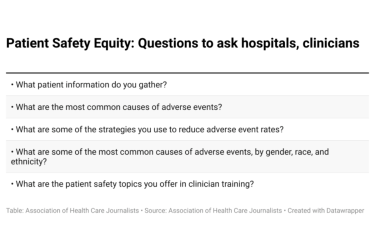 One of the problems with the fee-for-service payment system is that it’s a flawed method of payment for sick patients but it may be ever more flawed as a method of payment for those who are healthy. This point is one Katy B. Kozhimannil, Ph.D., made recently in an article for the American Journal of Managed Care.
One of the problems with the fee-for-service payment system is that it’s a flawed method of payment for sick patients but it may be ever more flawed as a method of payment for those who are healthy. This point is one Katy B. Kozhimannil, Ph.D., made recently in an article for the American Journal of Managed Care.
An associate professor in the Division of Health Policy and Management at the University of Minnesota School of Public Health, Kozhimannil wrote that payment models should compensate teams of physicians, midwives, nurses and other providers for delivering evidence-based services during pregnancy, childbirth and the postpartum period. These payment systems also should be based on the health risks of the mother and baby, she added.
Her analysis helps to clarify why maternity care in the United States ranks so poorly against that of other developed countries, as we explain in a new tip sheet on maternity care.
Health care journalists will find strong angles to pursue when writing about the dangers women face during pregnancy and that mothers and newborns face during childbirth and in the months following the birth.
One of those angles is how your state compares with other states in terms of deaths and injuries during pregnancy and childbirth. In a series for USA Today, investigative reporter Alison Young, reported that in California, Massachusetts and Nevada, hospitals are doing relatively well in keeping mothers safe from harm. But in Louisiana, Georgia and Indiana, the hospitals are among the worst in the nation. She also reported that no data were available on maternal death rates in Vermont, New Hampshire or Alaska.
Young’s ongoing series, called Deadly Deliveries, debuted in July.
Another strong angle to cover is the racial disparities in how hospitals provide maternal and newborn care. For the Bergen Record and NorthJersey.com, Lindy Washburn covered this angle, reporting that African-American babies are more than three times as likely to die in New Jersey before their first birthday as white babies and that African-American moms are more than four times more likely than white mothers to die of pregnancy-related complications.
At ProPublica, Annie Waldman also wrote about disparities when New York launched a program to eliminate such discrepancies in maternity care.
For ModernHealthcare, Steven Ross Johnson wrote in March about a study showing that fewer rural hospitals are offering obstetric care services. This decline has driven up the health risks and infant mortality in the medically underserved areas of rural American.
Last year, Kozhimannil and Austin Frakt wrote an opinion article for The Washington Post on this topic, “Rural America’s disappearing maternity care.” Frakt is an associate professor in the Boston University School of Public Health and writes the New Health Care blog for The New York Times.
Another way to cover maternity care is to look up how hospitals in your city or state score on the voluntary Leapfrog Hospital Survey on safety and quality. Some 2,000 hospitals complete this survey each year, meaning that if hospitals on your beat don’t submit these data, it’s worth asking why. And, what are they hiding?
In May, the Leapfrog Group issued a report on maternity care that showed some progress on reducing episiotomies (an incision at the opening of the vagina during childbirth), but no progress on reducing cesarean-sections.










